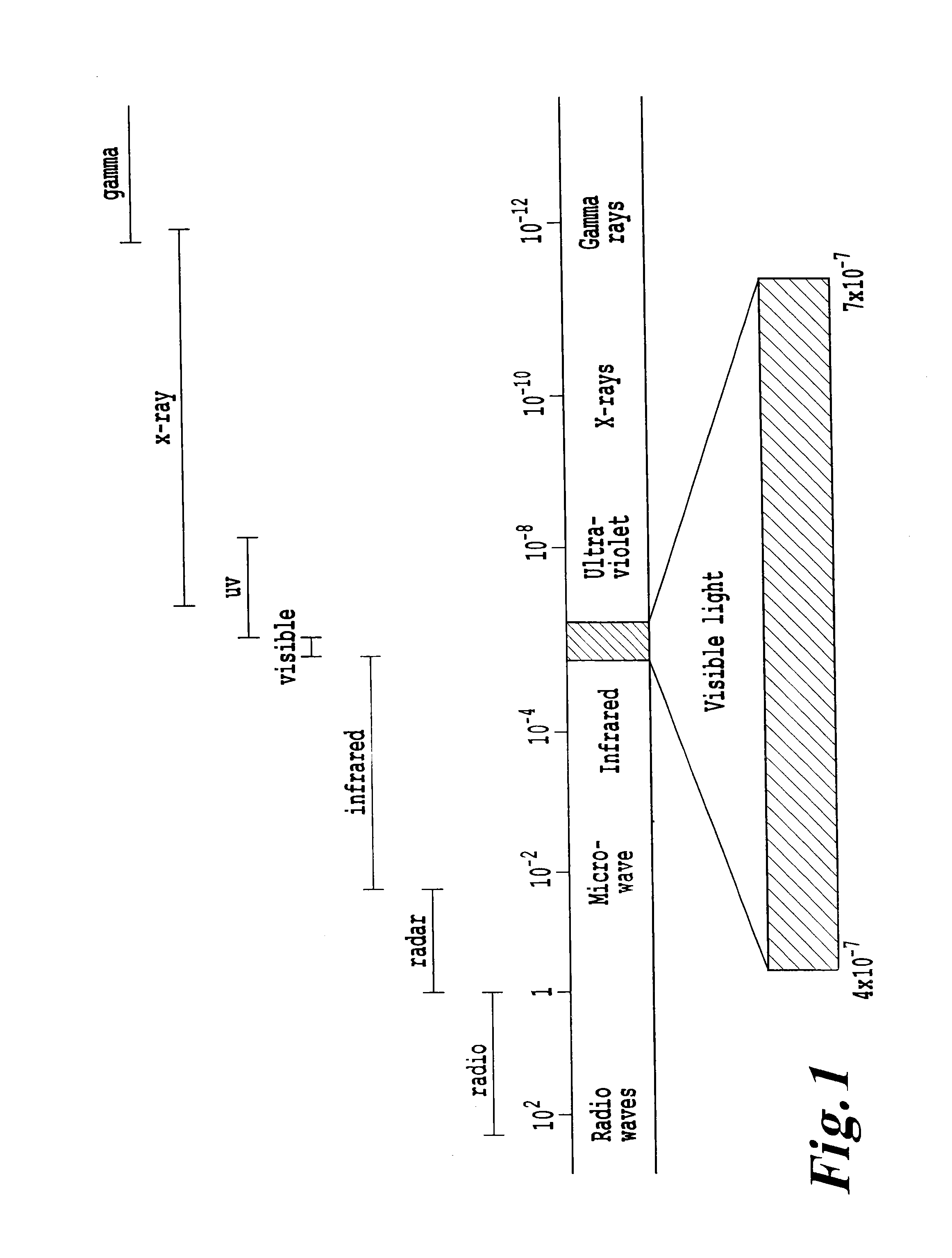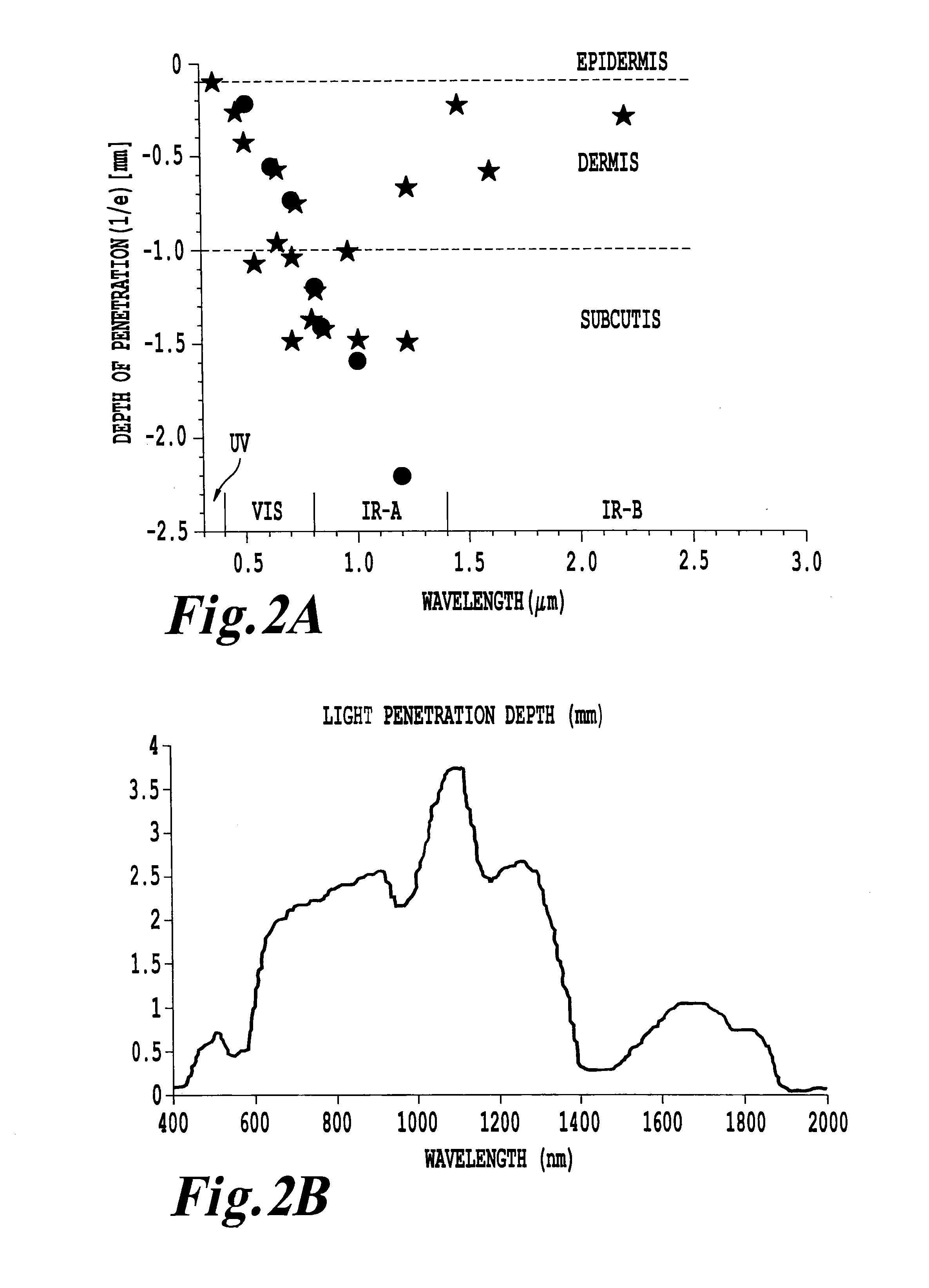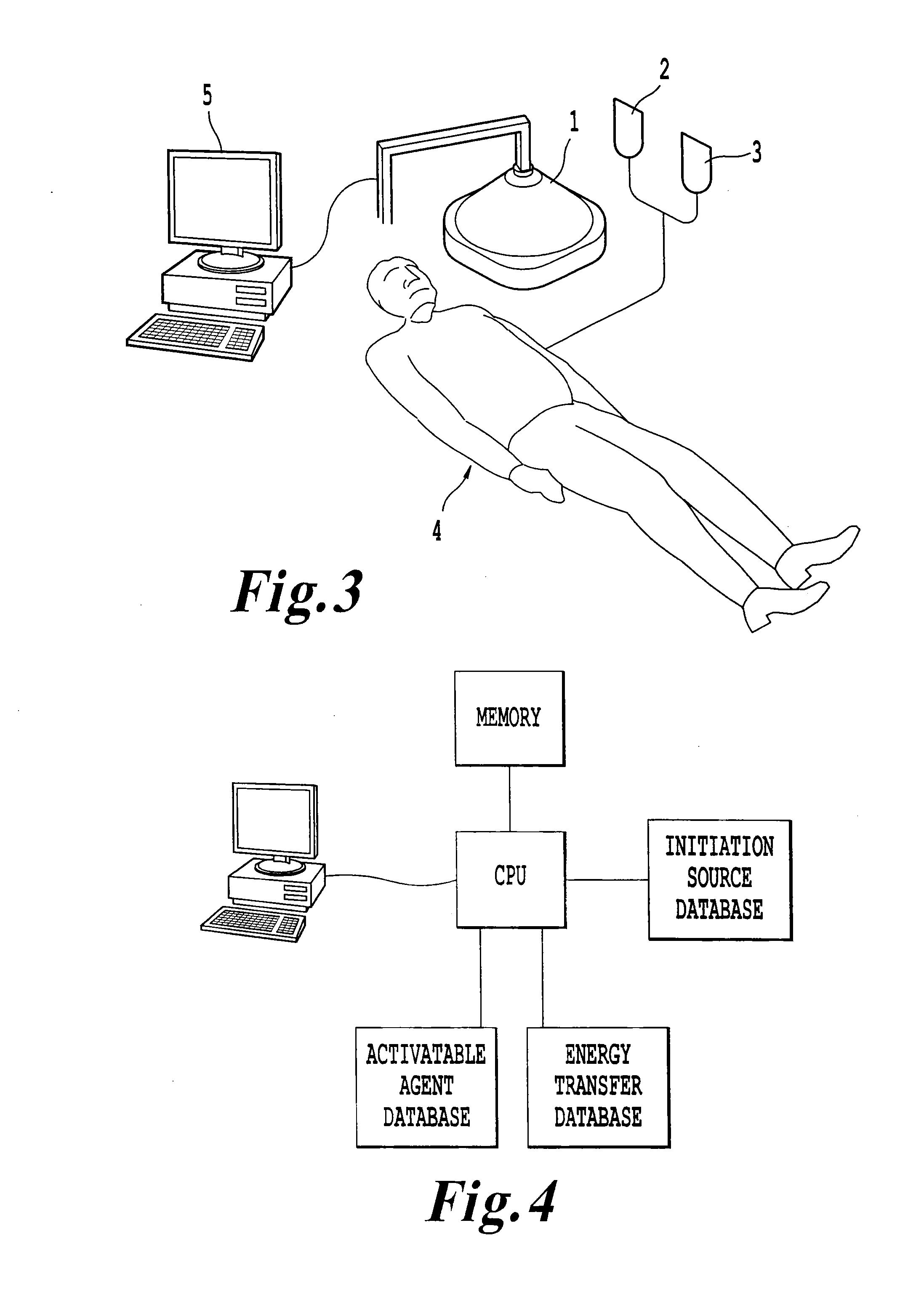Methods and systems for treating cell proliferation disorders
a cell proliferation and disease technology, applied in the field of methods and systems for treating cell proliferation disorders, can solve the problems of limiting affecting the effectiveness of current chemotherapy, and being expected to be an even greater threat to our society and economy
- Summary
- Abstract
- Description
- Claims
- Application Information
AI Technical Summary
Benefits of technology
Problems solved by technology
Method used
Image
Examples
example 1
[0180]In a first example, Vitamin B12 is used as a stimulating energy source for a photoactive agent overlapping its emission wavelength using dipole-dipole resonance energy transfer.
Excitation Max.Emission Max.Endogenous Fluorophore(nm)(nm)Vitamin B12275305
[0181]Vitamin B12 has an excitation maximum at about 275 nm and an emission maximum at 305 nm, as shown above and in Table 2. Table 4 shows UV and light emission from gamma ray sources. In this example, 113Sn and / or 137Cs are chelated with the Vitamin B12. The Vitamin B12 preferentially is absorbed by tumor cells. Thus, it is in close proximity and capable of activating 8-MOP, which is administered in advance as the photoactivation molecules. The emission band of Vitamin B12 overlaps the excitation band of 8-MOP; therefore, photo and resonance energy transfer occurs, when Vitamin B12 is in close proximity to 8-MOP. 8-MOP is activated and binds to DNA of the tumor cells inducing an auto vaccine effect in vivo.
example 2
[0182]In this example, gold nanoparticles are chelated with the Vitamin B12 complex. A suitable light source is used to stimulate the gold nanoparticles or Vitamin B12 may be chelated with one of the UV emitters listed in Table 4 in addition to the gold nanoparticles. The tumor cells preferentially absorb the Vitamin B12 complexes, such that the activated gold nanoparticles are within 50 nanometers of 8-MOP and / or other photoactivatable molecules previously administered. Therefore, resonance energy transfer activates the photoactivatable molecules, such as 8-MOP, and the activated 8-MOP binds to DNA in tumor cells inducing apoptosis and autovaccine effects.
[0183]In a further example, the nanoparticles of gold are clusters of 5 gold atoms encapsulated by poly-amidoamine dendrimers. Thus, the gold nanoparticles emit UV in the correct band for activating 8-MOP and other UV-activatable agents capable of exhibiting photophoresis and / or photodynamic effects.
[0184]Cells undergoing rapid pr...
PUM
| Property | Measurement | Unit |
|---|---|---|
| size | aaaaa | aaaaa |
| distances | aaaaa | aaaaa |
| distances | aaaaa | aaaaa |
Abstract
Description
Claims
Application Information
 Login to View More
Login to View More - R&D
- Intellectual Property
- Life Sciences
- Materials
- Tech Scout
- Unparalleled Data Quality
- Higher Quality Content
- 60% Fewer Hallucinations
Browse by: Latest US Patents, China's latest patents, Technical Efficacy Thesaurus, Application Domain, Technology Topic, Popular Technical Reports.
© 2025 PatSnap. All rights reserved.Legal|Privacy policy|Modern Slavery Act Transparency Statement|Sitemap|About US| Contact US: help@patsnap.com



